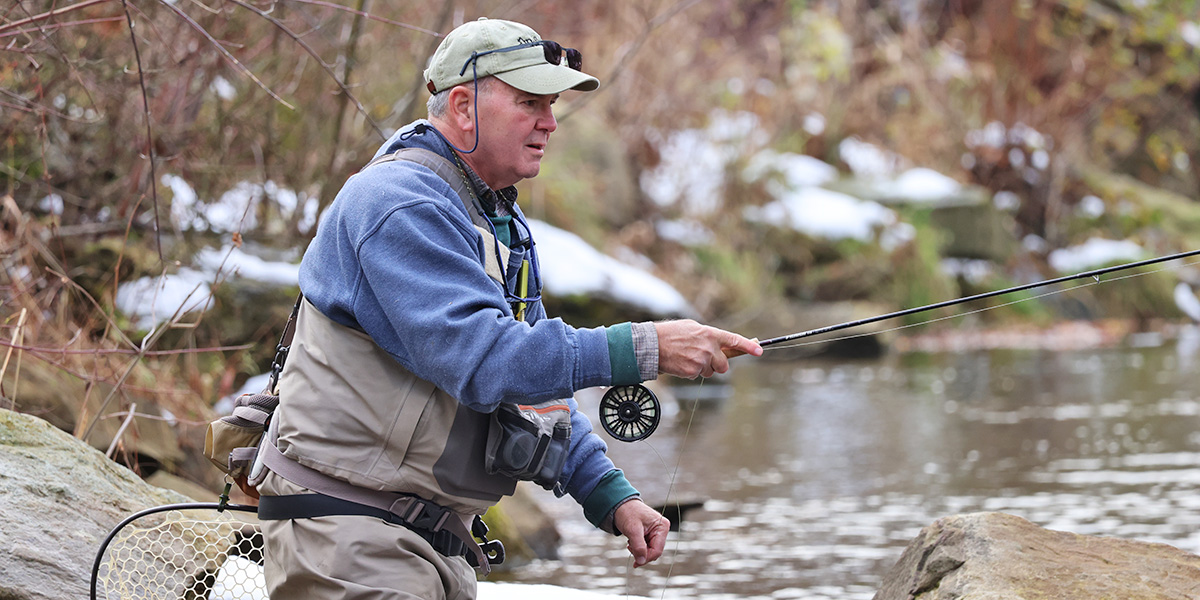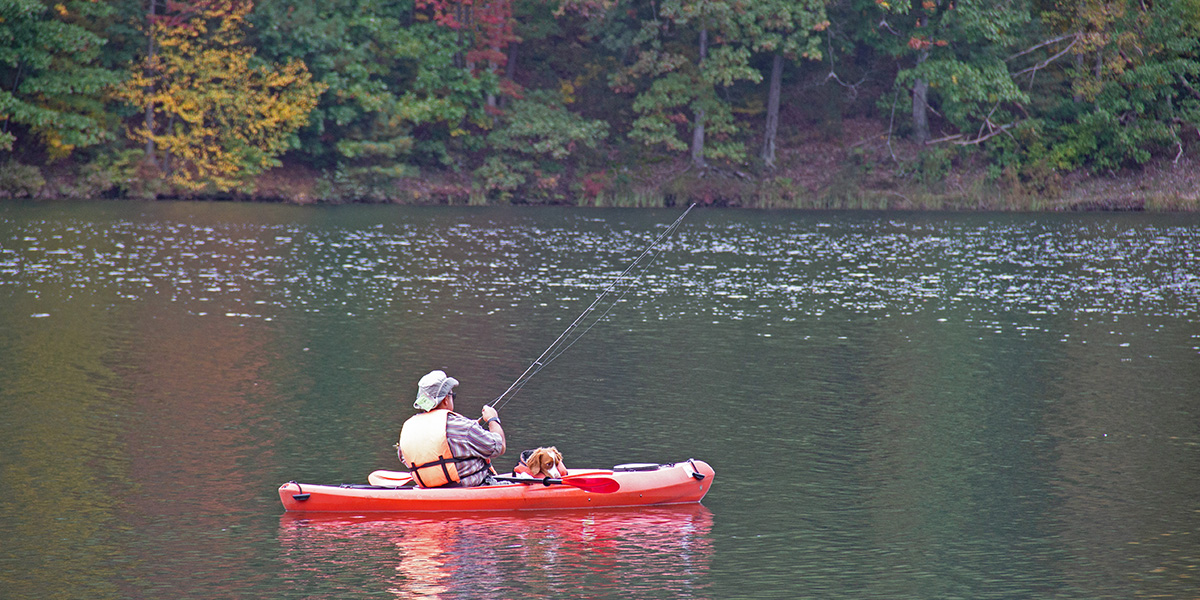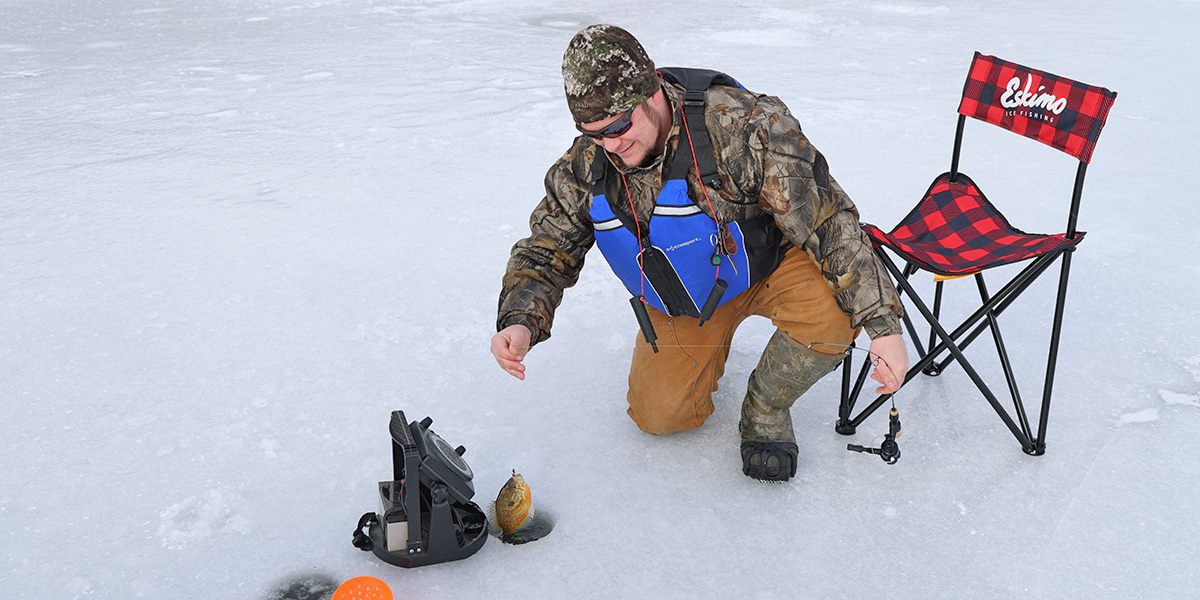Fishing Gear
Follow our Fishing Gear Checklist for all of the basic essentials needed for a successful fishing trip, like rods, reels, lure, bait and more.
Catch PA Fish
Learn about where, when and how to target the many species of Pennsylvania fish.
Where to Fish
- PFBC Lakes
- Best Fishing Waters by Fish Species (Interactive Map)
- Trout Waters (Interactive Map)
When to Fish
The Fish and Boat Commission Summary Book highlights everything you need to know when it comes to fishing. Learn about the seasons, sizes and creel limits for various fish species in PA.

Fly Fishing
Fly fishing is a fun and challenging way to catch many types of fish. Flies usually imitate aquatic insects, baitfish, and worms.
Fly Fishing

Ice Fishing
Check out our ice fishing maps, fishing tips and educational programs to expand your fishing skills onto the ice!
Ice FishingCatching and Handling Fish
Land the fish quickly. Don't let it fight and jump until it's exhausted. This is important anytime, but especially when the waters are warm. Water temperatures of 70 degrees and warmer are rough on coldwater fish. Increase the drag on your reel and make sure your fishing line is in good condition.
A landing net can help you land fish quickly. The best nets have a shallow bag made of fine mesh. If you must handle a fish, wet you hands first. It's best for the fish if you keep your hands off.
Keep the fish in the water as much as possible. Being out of the water is stressful for fish.
Handle the fish as little as possible. If you must handle the fish, make sure your hands are wet before you touch the fish.
Quickly remove the hook. Practice grabbing the hook shank and turning the hook upside down. Usually the fish will slide off of the hook. Pliers are a helpful took to have when removing a hook.
- Sometimes a fish will get hooked deeply and there's no way to get the hook out. Just snip the line as close as possible to the fish's mouth. Then release the fish.
Return the fish gently to the water as soon as possible.
Give the fish a few seconds to "shake it off." Then, if the fish doesn't swim away, gently move it back and forth in the water. This helps get a fresh dose of oxygen to the fish by moving water over its gills.
WATCH the proper way to handle a fish for safe catch and release.
How to Handle Fish for Safe Catch and Release
Follow these steps to learn safe catch and release while fishing.



